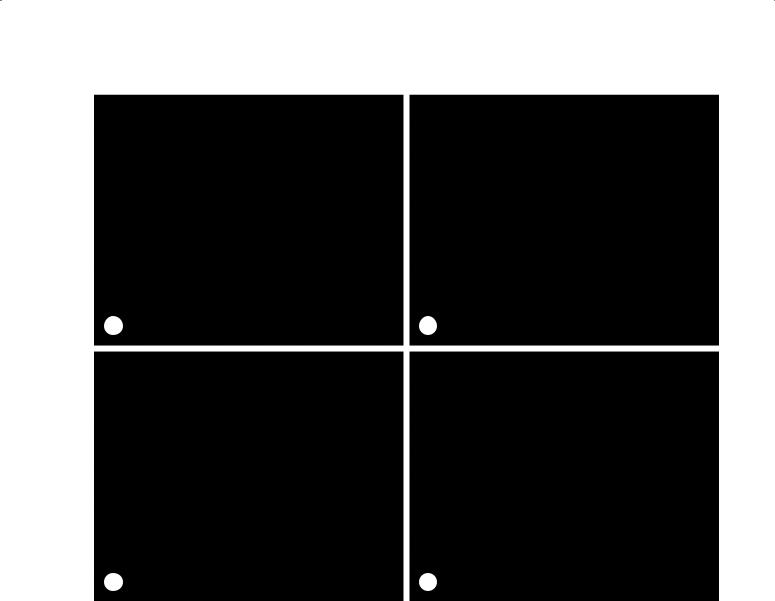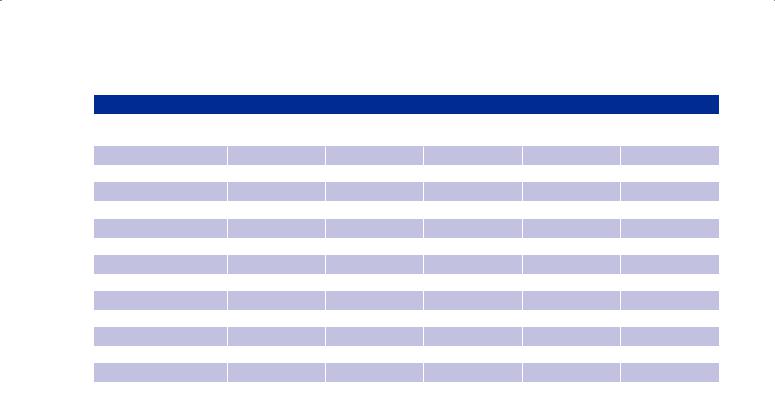
4 курс / Дерматовенерология / Дерматоскопия (3)
.pdf
© Dies ist urheberrechtlich geschütztes Material. Bereitgestellt von: TH Mittelhessen Mo, Okt 5th 2020, 09:04
10 General Principles
Figure 1.2: Commonly used handheld dermatoscope of Heine Company. When using this simple hand-held device one needs a contact fluid such as paraffin oil or ultrasound gel.
Figure 1.3: Procedure for dermatoscopy: First a contact fluid – in this case ultrasound gel – is applied on the skin lesion to be investigated. The transparent contact plate of the hand-held dermatoscope is then pressed onto the pigmented lesion covered with gel (the contact fluid smoothens the surface and reduces reflection), and the lesion can then be viewed through the magnifying lens.
Figure 1.4: Dermatoscope with polarized light, which dispenses with the need for a contact fluid or direct contact with the skin.
lesion pigmentation and vascularity, as these features are located in deeper layers of the epidermis, and the dermis. Light remitted from deeper structures is irregularly refracted by the unevenness of the superficial keratin layer, further degrading the perceived image. These phenomena are largely eliminated by using a contact fluid (such as alcohol, paraffin oil or ultrasound gel) to couple the baseplate of the dermatoscope to the skin. (1.3 and 1.5). Replacing the air between the skin and faceplate glass with a fluid smoothens the skin surface and creates a far better match of refractive indices, which greatly reduces reflection from the skin surface. More recently, dermatoscopes have been developed which eliminate surface reflection by the use of polarizing filters (1.4). These instruments do not require a contact fluid, or even direct contact with the skin. Although the images seen using polarizing instruments are very similar to those seen using contact dermatoscopy, a few significant differences exist (2). For example, perpendicular white lines (“shiny white lines”) are only
visible with polarized dermatoscopy (1.6, bottom row), while the white dots and clods of seborrheic keratosis are best viewed with non-polarized dermatoscopy (1.6, top row) Polarized and non-polarized dermatoscopy are therefore best considered complementary. Most new handheld dermatoscopes can switch between polarized and non-polarized mode.
1.2 Indication and Benefits of Dermatoscopy
In short, dermatoscopy is indicated when better resolution of pigment or vascular structures in the epidermis or upper dermis will help resolve a differential diagnosis. Immediately after the introduction of handheld instruments, dermatoscopy was promoted as being particularly useful in differentiating nevi from melanomas by assessment of pigment patterns. While this is important, the vast majority of cutaneous malignancies are not pigmented. Furthermore, even skin neoplasms which are most commonly pigmented have lightly pigmented

© Dies ist urheberrechtlich geschütztes Material. Bereitgestellt von: TH Mittelhessen Mo, Okt 5th 2020, 09:04
General Principles |
11 |
A |
B |
C |
D |
Figure 1.5: Two pigment lesions: A and B represent a melanocytic nevus while C and D show a seborrheic keratosis. The pictures in the left column (A, C) show what is seen with the naked eye while the right column (B, D) shows the image seen through the dermatoscope. In the dermatoscopic image one finds additional structural details that escape detection by the naked eye. This enhancement of detail is partly attributable to magnification, but more to the reduction of reflection on the surface of the skin.
or entirely non-pigmented variants. This includes a significant minority of melanomas.
While patterns formed by blood vessels and keratin are less diagnostically specific than patterns formed by melanin pigment, they still provide significant additional diagnostic information when pigment is absent, over and above naked eye clinical examination (3, 4).
Diagnosis of Melanoma
Despite strong evidence to the contrary, the belief that dermatoscopy adds nothing to the diagnosis of melanoma compared to naked eye examination persists into the 21st century.
In a trivial sense, this is true in that dermatoscopy does not add anything to the diagnosis of melanomas which
can confidently be diagnosed clinically, but this is a misunderstanding as to the role of dermatoscopy. The foremost role of dermatoscopy is not confirmation of a diagnosis established clearly with the naked eye but the unveiling of morphological criteria that revise the diagnosis established with the naked eye. Dermatoscopy can shift the point of diagnosis closer to the initial emergence of the neoplasm, but only if lesions with no naked eye evidence of malignancy are routinely examined.
We consider it self-evident that every melanoma goes through a stage in its evolution when it lacks the criteria required to allow diagnosis. This is the reason the clinical ABCD rule (1.7) contains a size criterion — not because melanomas are never less than 6 mm diameter,

© Dies ist urheberrechtlich geschütztes Material. Bereitgestellt von: TH Mittelhessen Mo, Okt 5th 2020, 09:04
12 General Principles
Figure 1.6: Dermatoscopy with and without polarization.
The pigmented lesions were photographed with (left column) and without (right column) polarization. Top row: The typical white dots and clods (“milia-like cysts”) of a seborrheic keratosis are better seen with classic contact dermatoscopy without polarization (right) and are invisible with polarization (left). Middle row: The coiled vessels of pigmented intraepithelial carcinoma (pigmented Bowen disease) are visible with and without polarization but with polarization (left) they appear more prominent. In the left image there are also some specific structures that consist of four white dots arranged in a square (arrow). These structures are only visible with polarized dermatoscopy. Bottom row: A basal cell carcinoma with white lines (left), which are nearly invisible without polarization.

© Dies ist urheberrechtlich geschütztes Material. Bereitgestellt von: TH Mittelhessen Mo, Okt 5th 2020, 09:04
General Principles |
13 |
A |
B |
C |
D |
Figure 1.7: The concept of the clinical ABCD rule is illustrated by four melanomas. The ABCD criteria are applied when the melanoma has achieved a certain size and has been present for a longer period of time (usually a few years). All of these melanomas are already invasive. In other words, they are not confined to the epidermis (in situ), but have invaded the underlying dermis. The chances of cure are reduced in proportion to the increasing depth of invasion.
but because the accuracy of clinical diagnosis is only acceptable for larger lesions. Melanomas less than 6 mm diameter are routinely diagnosable by dermatoscopy. Indeed, dermatoscopic monitoring over time allows diagnosis of melanomas even before the emergence of specific dermatoscopic features.
Figure 1.8 shows a melanoma just a few millimeters in size, which shows no melanoma-specific criteria on naked-eye inspection. It is neither asymmetrical nor has irregular margins, is not multicolored, and is not larger than 6 mm in size. However, dermatoscopic investigation shows that the criteria of a melanoma are clearly fulfilled. The diagnosis was confirmed by histology showing an in situ melanoma (1.9). In other words, neoplastic melanocytes are confined to the
epidermis. After excision of this melanoma, the patient may be deemed to be cured of the disease.
Like every morphological method, dermatoscopy has limitations. Dermatoscopy cannot entirely replace histopathology; in some cases histopathology is the only way to establish an unequivocal diagnosis. Rarely, dermatoscopy may be misleading; the naked eye criteria point in the right direction and dermatoscopic criteria erroneously point to a different diagnosis. However, these exceptions are only that, exceptions, and a large body of evidence demonstrates that the addition of dermatoscopy improves overall diagnostic accuracy. Histopathology is also a purely morphological method with its own limitations. Correlation of histopathologic with dermatoscopic findings may allow a diagnosis even when histopathology alone is not diagnostic.

© Dies ist urheberrechtlich geschütztes Material. Bereitgestellt von: TH Mittelhessen Mo, Okt 5th 2020, 09:04
14 General Principles
Figure 1.8: A melanoma on the forearm, just a few millimeters in size. The condition may be clearly diagnosed as a melanoma on the basis of dermatoscopy because of the presence of so-called pseudopods, whereas the application of the ABCD rule and naked-eye assessment are both unreliable. The histological image clearly shows an in situ melanoma (Figure 1.9).
Figure 1.9: Histopathological view of the melanoma shown in Figure 1.8. Although the lesion is small, a melanoma can be diagnosed with absolute certainty. The melanocytic lesion is asymmetrical. The melanocytes in the epidermis are mainly arranged as single cells, melanocytes vary in size and shape, possess a hyperchromatic nucleus, an eosinophilic cytoplasm, and contain dusty melanin pigment. One finds several individual melanocytes in higher layers of the epidermis (pagetoid spread). The diagnosis is in situ melanoma.
1.3 Diagnostic Accuracy
The benefits of dermatoscopy as compared to examination with the naked eye alone are measurable and have been examined in multiple studies. Most of the published studies do not consider differentiating melanoma from all other skin lesions, but are limited to the distinction between melanocytic nevi and melanoma. In this simple case, the diagnostic accuracy can be expressed by two indices. Sensitivity is defined as the proportion of correctly diagnosed melanomas in relation to the total number of melanomas in the investigated sample. For instance, if 70 of 100 melanomas are diagnosed correctly as melanomas, the sensitivity of the examination is 70 %. Specificity is defined as the proportion of correctly diagnosed nevi in the investigated sample. For instance, if 80 of 100 nevi are diagnosed correctly, the specificity of the examination is 80 %. Table 1.1 lists the results of 13 studies in which the diagnostic accuracy of dermatoscopy was directly compared with naked-eye inspection. The given values of sensitivity and specificity refer exclusively to the distinction between melanomas and nevi. The different values found in the various studies are more a reflection of study design than any “real” differences; differences in the selection of samples,

© Dies ist urheberrechtlich geschütztes Material. Bereitgestellt von: TH Mittelhessen Mo, Okt 5th 2020, 09:04
|
|
|
|
General Principles |
15 |
|
Table 1.1 |
|
|
|
|
|
|
First author and year of |
Sample size (n) |
Sensitivity |
Specificity |
|
||
publication |
|
|||||
|
|
|
|
|
|
|
|
|
Unaided eye |
Dermatoscopy |
Unaided eye |
Dermatoscopy |
|
Benelli 1999 |
401 |
67 % |
80 % |
79 % |
89 % |
|
Binder 1995 |
240 |
58 % |
68 % |
91 % |
91 % |
|
Binder 1997 |
100 |
73 % |
73 % |
70 % |
78 % |
|
Carli 1998 |
15 |
42 % |
75 % |
78 % |
89 % |
|
Cristofolini 1994 |
220 |
85 % |
88 % |
75 % |
79 % |
|
Dummer 1993 |
824 |
65 % |
96 % |
93 % |
98 % |
|
Krähn 1998 |
80 |
79 % |
90 % |
78 % |
93 % |
|
Lorentzen 1999 |
232 |
77 % |
82 % |
89 % |
94 % |
|
Nachbar 1994 |
172 |
84 % |
93 % |
84 % |
91 % |
|
Soyer 1995 |
159 |
94 % |
94 % |
82 % |
82 % |
|
Stanganelli 1998 |
20 |
55 % |
73 % |
79 % |
73 % |
|
Stanganelli 2000 |
3.329 |
67 % |
93 % |
99 % |
100 % |
|
Westerhoff 2000 |
100 |
63 % |
76 % |
54 % |
58 % |
|
the manner of presenting dermatoscopic images, and the subjects’ level of training, to name a few. Still, the majority of studies show the diagnostic accuracy of dermatoscopy to be higher than that of the naked-eye investigation. In 2002 and in 2008 the results of the studies were confirmed by two meta-analyses (5, 6). In 2011 Rosendahl et al. confirmed that dermatoscopy also improves the diagnostic accuracy for non-melanocytic lesions (7).
1.4 Training
Specific training in dermatoscopy is essential. Elementary training in the use of the method requires no more than a few days for beginners with a basic knowledge of pigmented skin lesions. Not only physicians but also nurses, medical students and even lay persons can be successfully trained to use dermatoscopy (8). However, as is true for all morphological methods, continuous practice and regular use of the method are absolute prerequisites for the achievement of real expertise.
Without basic training, adding dermatoscopy to clinical examination has been shown to worsen diagnostic accuracy (9). The subjects in this study were physicians who had some experience in clinical diagnosis of pigmented lesions, but no formal training in dermatoscopy. The subjects were confronted with two photographs
— clinical close-up and dermatoscopy — of a series of pigmented lesions. The sensitivity (the percentage of correctly diagnosed melanomas) dropped significantly after presentation of dermatoscopic photographs. It has
been speculated that the unfamiliar structures revealed by dermatoscopy only served to confuse clinicians who are trained in naked eye assessment. The trivial but important conclusion drawn from this study was that dermatoscopy serves only those who know how to use the procedure. A similarly structured study showed that a short and intensive phase of training – of just a few days’ duration – is sufficient to learn the basic principles of the method and markedly improve diagnostic accuracy (10).
The best way to teach dermatoscopy to novices is still a matter of debate. Tschandl et al. tested the two common strategies used to teach dermatoscopy (11). One group of students received a more verbal-based training with detailed explanations of diagnostic criteria, the other group received a more visual-based training involving the presentation of a large number of images representative for each diagnosis without pointing out specific criteria. The first method may be called the explanatory, the second the demonstrative method. The diagnostic accuracy was similar in both groups although there were some differences with regard to certain diagnoses. The group receiving demonstrative training had a higher sensitivity for basal cell carcinoma whereas the group receiving explanatory training had a higher sensitivity for seborrheic keratosis and a higher specificity for nevi. We consider these to be complementary strategies. One needs to learn the “alphabet” of dermatoscopy, which is best explained verbally, but one also needs to see the different patterns and their subtle variations, which is best demonstrated visually.

© Dies ist urheberrechtlich geschütztes Material. Bereitgestellt von: TH Mittelhessen Mo, Okt 5th 2020, 09:04
16 General Principles
1.5 Development of the Method
It is instructive to follow the evolution of dermatoscopy as a tool for the assessment of pigmented skin lesions
– on the one hand to understand the origins of common methods, and on the other hand to comprehend and classify the diverse terms in use (the ad hoc proliferation of terms is a major source of confusion). Pioneers in the field of dermatoscopy such as Saphier largely confined themselves to the description of inflammatory skin lesions like lichen planus, lupus erythematosus, or scabies. At this time dermatoscopy was apparently of no importance for the diagnosis of pigmented skin lesions or melanoma. The first serious report about the value of dermatoscopy for the diagnosis of melanoma was published by Rona MacKie in 1971 (12). Ten years later the Austrians Fritsch and Pechlaner published “Differentiation of benign from malignant melanocytic lesions using incident light microscopy”. In addition to other criteria, the authors describe in detail the basic anatomical features of the pigment network, which is one of the principal structures in dermatoscopy (13). This report mentions dermatoscopic differences between nevi and melanomas, but a general method for the diagnosis of pigmented skin lesions is just briefly outlined.
1.5.1 Pattern Analysis
In 1987 Pehamberger, Steiner, and Wolff described pattern analysis, the first analytical method to distinguish between the primary types of pigmented skin lesions (at the time, the rather cumbersome term epiluminescence microscopy was used instead of dermatoscopy) (14, 15). Pattern analysis is based on recognition of a number of dermatoscopic structures which constitute reproducible patterns characteristic of the more common pigmented lesions. As the first studies on pattern analysis were published in English-language journals, the Austrians Pehamberger, Steiner, and Wolff used only English terms for the structures they described, such as radial streaming, blue-whitish veil or the milky way. These neologisms were poorly defined or not defined at all. This artificial metaphoric language created a barrier even to those willing to learn. Furthermore, the diagnosis was based not only on the presence or absence of a dermatoscopic structure, but also on qualitative aspects. For instance, the German term “Schollen” (clods) which was given the English designation of “globules” was assessed according to whether they were distributed regularly or irregularly, and whether they were of the same size or different sizes. Qualitative aspects of the pigment network described a few years earlier by Fritsch and Pechlaner included, according to Pehamberger, Steiner, and Wolff, paired terms such as
Table 1.2: List of dermatoscopic criteria established at the consensus conference in Hamburg in 1989
Pigment network discrete prominent regular irregular wide
narrow broad delicate
Irregular extensions, pseudopods Radial streaming
Brown globules Black dots
Whitish veil, milky way
White scar-like depigmented areas Grayish-blue areas Hypopigmentation
Reticular depigmentation Milia-like cysts Comedo-like openings Telangiectasia Reddish-blue areas Maple leaf-like areas
regular/irregular, or delicate/prominent, and narrow/ broad. Unfortunately (though inevitably) these poorly defined qualitative properties were subject to a wide range of inter-individual differences in interpretation, and were poorly reproducible. Despite justified criticisms, however, the studies of Pehamberger, Steiner, and Wolff were the first systematic approaches in this field and the starting point for further developments that followed in subsequent years.
Shortly afterwards, other research groups in Europe also showed interest in dermatoscopy, which soon led to a variety of approaches. The consequences were an uncontrolled growth of terms on the one hand, and the absence of consensus about fundamental aspects on the other. The first attempt to counteract this evolution and standardize dermatoscopy was made as early as in 1989 at a consensus conference in Hamburg (16). The results of this consensus conference were published in 1990. The participants established a list of diagnostic criteria that is shown in table 1.2. One outcome of the consensus conference was speculation about the

© Dies ist urheberrechtlich geschütztes Material. Bereitgestellt von: TH Mittelhessen Mo, Okt 5th 2020, 09:04
General Principles |
17 |
histopathological correlates of dermatoscopic criteria, but there was no attempt to define the listed criteria. Today this list is mainly of historical value.
1.5.2 Evolution of a diagnostic algorithm
The pattern analysis published by Pehamberger, Steiner and Wolff in 1987 was mainly confined to a description of the frequencies of dermatoscopic structures for the most important pigmented skin lesions. A formal method that can be used for melanocytic as well as non-melanocytic skin lesions and which guides the investigator in a structured manner to a specific diagnosis was not provided. This was developed in the following years. In this regard, the studies of Jürgen Kreusch (17) and Wilhelm Stolz (18) are worthy of mention. They proposed a 2-step algorithm. The first step classified pigmented skin lesions as either melanocytic or non-melanocytic, and specifically diagnosed several common non-melanocytic tumors. The second step was applied to melanocytic lesions only, with the goal of distinguishing melanoma from melanocytic nevi. This method of investigation gained acceptance, although in slightly modified form and despite a few weaknesses (which will be addressed later).
1.5.3 Scoring Systems for Melanocytic Lesions
The subsequent evolution of the technique saw attempts to simplify the method and schematize it further. Attention was mainly focused on differentiating melanomas from nevi. In pattern analysis, evaluation of the identified dermatoscopic structures in the individual case was left to the investigator’s judgment. However, this requires considerable experience, so simple scoring systems were developed. Their purpose is to lead the investigator to the correct diagnosis by the aid of structured algorithms. These systems include Stolz’ ABCD rule (19), Argenziano’s 7-point check list (20), Menzies’ method (21), the 3-point checklist (22) the CASH algorithm (23), and the chaos and clues algorithm (24). All of the above mentioned algorithms are confined to a few structural characteristics and vary with respect to their inclusion of symmetry and color (1.10).
Stolz’ ABCD rule
The ABCD rule of dermatoscopy was published by Stolz in 1991. The fact that it followed the clinical ABCD rule was not a coincidence. The criteria of asymmetry, border and color are very important here. However, the letter D stands for dermatoscopic structures and not for diameter, as it does in the clinical ABCD rule. Since a size limit does not apply, the dermatoscopic ABCD rule is applicable to small melanomas as well.
In the dermatoscopic ABCD rule, scores are assigned to the four criteria of asymmetry, border, color and dermatoscopic structures, each of which are multiplied by a fixed factor (the latter is determined by the use of statistical methods and a large random sample). Dermatoscopic structures scored in the method of Stolz are pigment network, dots, clods (“globules”), “branched streaks”, and structureless areas. These 4 scores are summed to determine a total dermatoscopy score. This score categorizes the lesion as either benign, suspicious or malignant. The ABCD rule only applies to melanocytic lesions.
Argenziano’s 7-point check-list
When using Argenziano’s 7-point check-list lesions are assessed for the presence of seven criteria; 3 major which score 2 each, and 4 minor which score 1 each. A total score of three or more is indicative of melanoma. The major criteria are an atypical pigment network, a blue-whitish veil, and an atypical vascular pattern. The minor criteria are irregular streaks, irregular dots/ globules, irregular blotches, and regression structures. Like the ABCD rule, the 7-point check-list is only suitable for melanocytic lesions.
Menzies’ Method
Menzies’ method proceeds in a stepwise manner. First, symmetry and color are assessed. All lesions which are symmetrical or one color are regarded as benign and excluded from further analysis. All other pigmented lesions are assessed for the following dermatoscopic features: blue-white veil, multiple brown dots, pseudopods, radial streaming, scar-like depigmentation, peripheral black dots or globules, five or six colors, multiple blue-gray dots, and a broadened network. Melanoma is diagnosed when at least one of these features is present. According to the author, the sensitivity of this method is 92% and its specificity, 71%.
Three-point checklist
The 3-point checklist is a simple approach with a relatively high sensitivity and moderate to fair specificity. It takes into account only 3 criteria: Asymmetry, atypical network, and blue white structures. A pigmented lesion that has any 2 of these 3 criteria should be biopsied.
CASH algorithm
The acronym CASH stands for color, architecture, symmetry, and homogeneity. CASH is similar to Stolz’ ABCD rule for dermatoscopy. The CASH score ranges from 2–17 and was reported to reach a sensitivity of 98 % and a specificity of 68 % at a cut point of 8.

© Dies ist urheberrechtlich geschütztes Material. Bereitgestellt von: TH Mittelhessen Mo, Okt 5th 2020, 09:04
18 General Principles
Figure 1.10: This pigmented lesion can be clearly diagnosed as a melanoma with any dermatoscopic method.
Stolz’s dermatoscopic ABCD rule: A (asymmetrical in both axes; 2.6 points), B (sharp interruption of pigment in four segments; 0.4 points), C (4 different colors: light brown, dark brown, blue-gray, black; 2 points), D (4 different dermatoscopic structures: reticular lines, dots, clods, and a structureless area; 2 points) – yield 7 points in all and thus confirm the diagnosis of melanoma (if the total sum is > 4.75 points, the diagnosis is melanoma).
Argenziano’s 7-point check-list: Two major criteria (asymmetry and blue-whitish veil) and a minor criterion (irregular dots/globules) yield 5 points and thus confirm the presence of a melanoma (a melanoma is presumed to exist from a score of 3 points onward).
Menzies’ method: Asymmetry and more than one color and the simultaneous presence of positive criteria, such as peripheral black dots/ globules or a blue-whitish veil lead to the diagnosis of melanoma.
Chaos and clues: A chaotic lesion with multiple clues to malignancy (gray/blue structures, eccentric structureless zone, peripheral black dots) should be excised to exclude malignancy.
Pattern analysis: A clearly asymmetrical pattern (reticular lines, dots, structureless area), more than one color with melanin being predominant (brown, blue, black), also arranged asymmetrically, and several specific criteria confirming the presence of a melanoma (black dots in the periphery and a structureless eccentric blue area) clearly indicate the presence of melanoma.
Chaos and clues
Like the Menzies’ algorithm the chaos and clues algorithm is a stepwise procedure. First one scans for chaos (defined as asymmetry of structure or color) and only when chaos is discovered one has to search for one of nine clues to malignancy. If there are both chaos and at least one clue to malignancy then biopsy or excision is recommended. The chaos and clues algorithm does not involve any calculations. It works for melanocytic and non-melanocytic lesions.
1.5.4 What happened to pattern analysis?
In addition to these “simplified” systems, pattern analysis still exists as a comprehensive diagnostic method and it has been adapted in the last few years by the inclusion of new criteria. In this regard the work of Alfred Kopf and Ashfaq Marghoob, who defined benign and malignant patterns and included new criteria, deserves special mention (25). Also worthy of mention are the assessment of dermatoscopic criteria for pigmented basal cell carcinoma by Menzies (26), the analysis

© Dies ist urheberrechtlich geschütztes Material. Bereitgestellt von: TH Mittelhessen Mo, Okt 5th 2020, 09:04
General Principles |
19 |
of progression patterns of facial melanoma by Stolz (27), the description of the patterns of Clark nevi by Hofmann-Wellenhof (28), the evaluation of dermatoscopic criteria of pigmented seborrheic keratosis by Braun (29), the categorization of the protean dermatoscopic patterns of dermatofibroma by Zaballos (30), the classification of patterns of acral melanocytic lesions by Saida and Tanaka (31, 32), the analysis of pigmented mucosal lesions and recurrent nevi and melanoma by Blum (33), the discovery of dermatoscopic clues for pigmented Bowen’s disease by Cameron (34), and finally the dermatoscopic classification of nevi in different age groups by Zalaudek (35). All the above mentioned achievements have been accomplished by the application of pattern analysis.
In fact, it has been shown that pattern analysis is superior to other investigation techniques in many respects. Beginners find it easier to cope with the simple algorithms, but they are soon confronted with barriers which can be resolved only by a comprehensive method such as pattern analysis.
What is one talking about when one refers to pattern analysis? In actual fact, it is still not clear what a person does when he/she uses pattern analysis. Due to the large number of criteria to be considered, pattern analysis is more difficult and demanding than simple scoring systems, but it is also more powerful and flexible. How the investigator combines these criteria to reach a diagnosis remained a mystery for a long time because the rules of this skill were never clearly formulated. Thus, pattern analysis appeared to be mysteriously dependent on the user’s ingenuity. Teaching this technique was a somewhat mystifying subject. The greatest challenge of this book is to render pattern analysis – this powerful methodological tool – communicable and comprehensible.
1.5.5 Standardization and Consensus
After the previously mentioned first consensus conference held in 1989 in Hamburg, nothing happened for a long time. Dermatoscopy remained split into various schools. A uniform method, homogeneous criteria, and congruent definitions were absent. It was not until the founding of the International Dermoscopy Society (IDS) in 2001, under co-founder and first president Peter Soyer, a dermatologist from Graz, that a forum was formed. This forum declared that it was responsible for answering questions relating to the consensus. As it combined all important research groups, it appeared to be legitimized to perform the task. This development culminated in a consensus conference held via the Internet and the organization of the First World Congress
of Dermatoscopy in 2002 in Rome. The results of the consensus conference were summarized in a consensus paper which was presented a year later in the Journal of the American Academy of Dermatology (JAAD) (36). The consensus included the first step of the diagnostic algorithm, namely the distinction between melanocytic and non-melanocytic lesions, as well as the previously mentioned scoring systems for melanocytic lesions and the definitions of the most commonly used terms in dermatoscopy (1.11 to 1.13). Regrettably, this unique opportunity to simplify the language of dermatoscopy was missed. Instead, metaphoric terms were adhered to and incomplete or contradictory definitions were formulated.
After the results of the second consensus were published in 2003 the vocabulary of dermatoscopy expanded significantly. Even experts struggled with the multitude of terms. The main driving forces for the creation of new terms were the expansion of dermatoscopy to new realms such as inflammatory skin diseases and the introduction and dissemination of polarized dermatoscopes that allowed observations of structures previously invisible with classic contact dermatoscopy. Many new terms, especially those that were published in case reports, were ill-defined metaphors with dubious diagnostic significance.
In 2007 Harald Kittler introduced a simple descriptive terminology that avoids metaphoric terms and is based on five geometrically defined basic elements, namely lines, pseudopods, circles, clods and dots (37). The advantages of this terminology are its simplicity, its logical structure, and the lack of need for definitions beyond those of basic elements. In the following years the descriptive terminology became increasingly popular. The growing controversy between descriptive and metaphoric terminology and the growing number of new terms demanded the need for a new consensus. In 2013 Alan Halpern initiated the International Skin Imaging collaboration (ISIC) and appointed Harald Kittler to lead a selected group of experts charged with creating a standardized dictionary of dermatoscopy. This process led to the 3rd consensus conference which was finalized during the 4th World Congress of Dermatoscopy in Vienna in April 2015. After two years of extensive discussions the expert group succeeded in creating a dictionary of standardized terms that takes into account descriptive and metaphoric terminology. This dictionary, which was published along with the consensus paper in 2016 (38), is now the standard reference for all issues related to terminology. We will deal with the dictionary in detail in chapter 4. For reasons that we will explain below the authors of this
